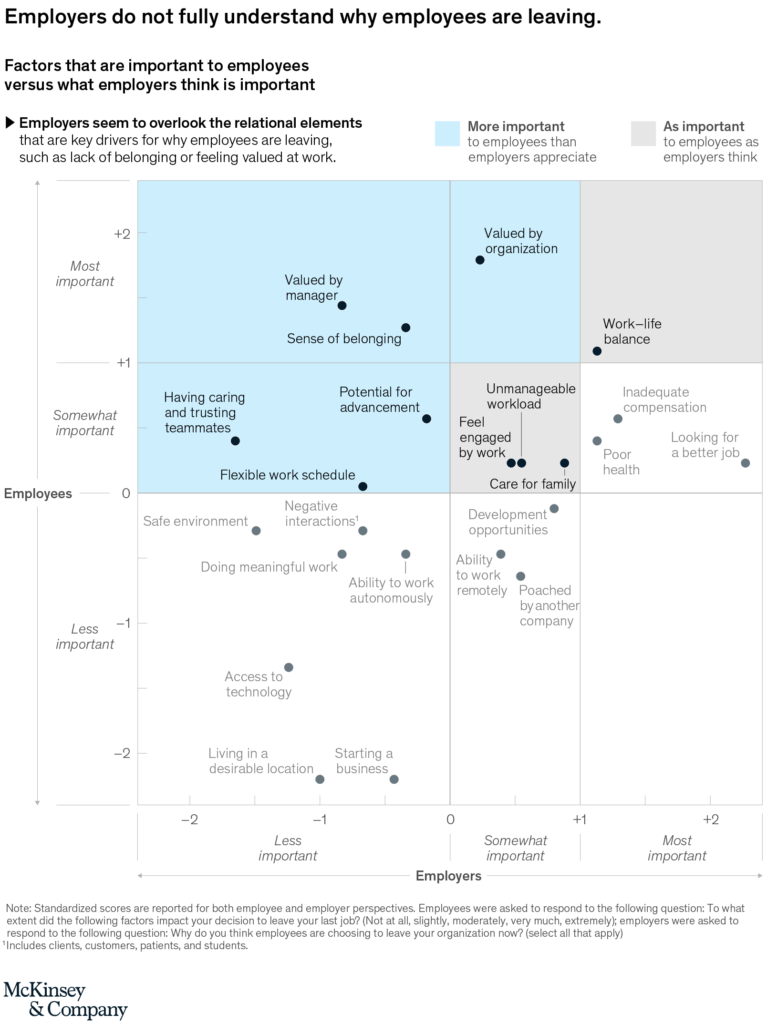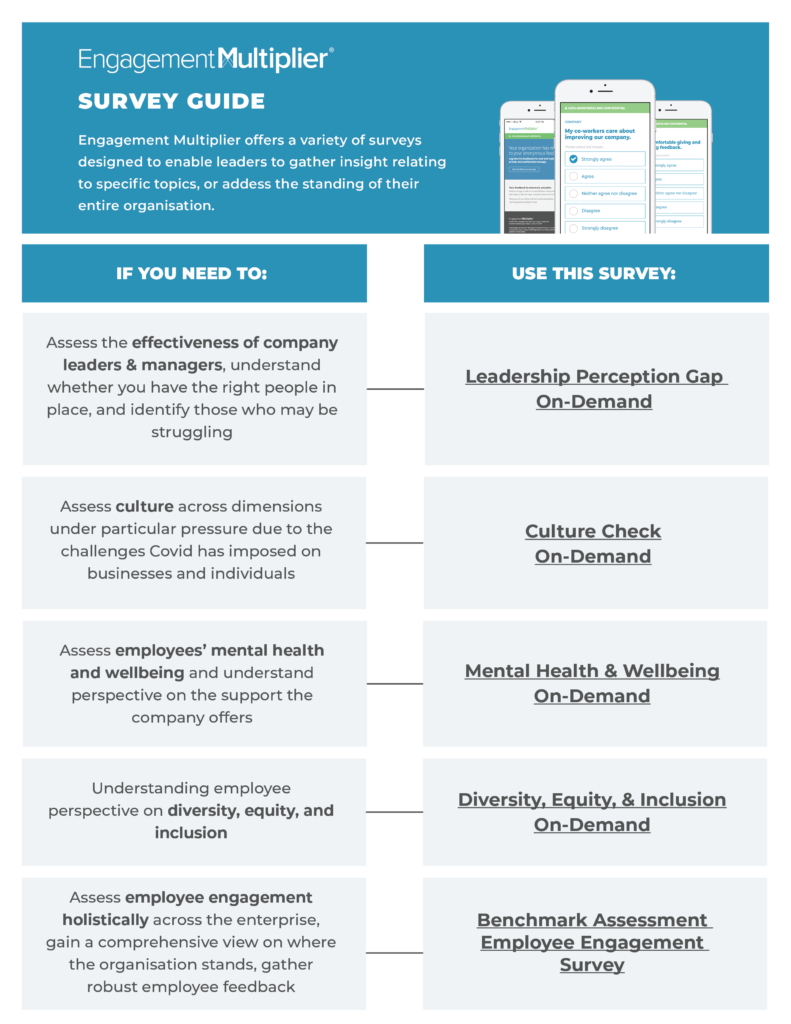I spend quite a lot of time speaking to my fellow founders and CEOs, and I know well how difficult the last year-and-a-half has been for business owners striving to keep the business going, keep people employed, keep the customers happy, and keep everyone safe.
However, even late last year I saw signs that concerned me — leaders were so busy focusing on the details of their businesses, they neglected to focus on the details relating to their people. As a result, their company cultures started to erode and employees started to burn out. Fast forward to now, and those chickens have well and truly come home to roost.
A remarkable article from McKinsey entitled ‘Great Attrition or Great Attraction? The Choice is Yours’ lays bare the current situation and the imperative for leaders to act.
People are not machines. They will not go on forever with the same inputs and maintenance. Their needs evolve, and if those needs are not met, they will walk out the door – and that is exactly what’s happening right now, as I write this.
All over the world, people are quitting their jobs. In America alone, more than 15 million have voluntarily left their jobs this year. A new study by McKinsey indicates this is not a uniquely American problem. Across a sample that spans the globe as well as a multitude of industries, the company found that 40% of employees are strongly considering leaving their jobs within the next three to six months, and 18% of those respondents indicated that their decision is nearly certain.
The Great Resignation is a catastrophe, and it’s largely one of leaders’ own making.
As we have been saying for almost a year, leaders are out of touch with what employees want and need. McKenzie says it well: ‘By not understanding what their employees are running from, and what they might gravitate to, company leaders are putting their very businesses at risk.’

Furthermore, McKinsey also finds that leaders are quick to believe they know what is causing people to depart their jobs pointing to better compensation and work-life balance, and poor physical and mental health… but they are, in fact, wrong. Their survey proves what we’ve been saying all along: the reasons people are quitting their jobs in droves are:
- They don’t feel valued by their managers (54%) or their organisations (52%)
- They don’t feel a sense of belonging at work (51%)
At the beginning of this year, we highlighted a sense of belonging as the number one driver of employee engagement, and something employers seeking to retain and re-energise their employees should pay attention to, which brings me to my next point.
Competitive advantage or failure? Attrition or attraction? The choice is stark.
This moment presents a stark choice for leaders: take action and secure competitive advantage, or stay the course and fail. If you think I’m being hyperbolic, read on.
Leaders who set aside their assumptions, and take focused action to understand what their people need, and then plug the gaps in their employee experience that could be compelling people to leave are going to achieve two things. In the short term, they will do a much better job of retaining their people. Additionally, they will also be armed with intelligence and compelling employee experience that will truly set them apart in the job market. Taken together, these two elements will form the foundation of true competitive advantage for the organisation. It boils down to this: the actions the organisation takes to stem the tide of attrition will also help the organisation attract new talent.
Alternatively, leaders who dismiss the importance of ‘softer’ elements such as a sense of belonging and purpose, workplace recognition, and the desire for meaningful interactions hold for employees are going to find the future quite a difficult place. Their organisations will struggle to recruit new talent, even as existing employees leave, and will find themselves mired in chaos, unable to meet customer demand, and watching opportunity slip away.
Is this melodramatic? Possibly. But consider the current circumstances, in which so many businesses are struggling to maintain adequate staff levels. Do you want more of this, except even worse? Because indications suggest this is not simply a passing storm. McKinsey found that most business leaders they surveyed are not only experiencing higher than usual voluntary turnover, but they expect the problem to worsen over the coming months, well into the new year.
For leaders, the risk of inaction is two-fold: in addition to failing to retain employees, organisations that fail to ascertain and adjust to what people are now looking for are also going to fail on the recruitment front. However, those who get it right will have a far different experience.
Seizing competitive advantage
An advantage over competitors is every leader’s dream. It’s also a wholly attainable objective for those leaders who choose to act and create the kind of workplace people want to join (and are loath to leave.)
Organisations that do a better job of retaining and attracting new employees will quickly find themselves at an advantage, and not just because they’ve managed to stabilise staff levels even as their competitors struggle with hiring. The leaders who invest their time and energy in creating a great place to work will also find themselves enjoying the benefits of a team full of engaged employees.
Purpose is not a ‘nice to have.’ It is imperative.
Just as your people aren’t machines, nor are they viewing their jobs as mere transactions, which is why retention bonuses and token pay rises simply don’t work for retaining employees.
An earlier study by McKinsey found that the great majority of employees (85%) at all levels within the company expect their jobs to bring a significant sense of purpose to their lives. However, a similar majority of front-line employees indicated they feel unable to contribute purposefully in their daily work. Simply put, employers need to help meet the need for meaningful work that fulfills a purpose — or be prepared to lose their people to companies that will.
If you suspect your organisation needs to refresh its purpose, our simple guide will make the process easy.
Don’t be afraid of asking employees for their feedback
‘Our research underscores the many ways the pandemic has irrevocably changed what people expect from work. The landscape will continue to change as companies try out new hybrid-work approaches. If you’re a CEO or a member of a top team, your best move now is to hit “pause” and take the time to think through your next moves. A heavy-handed back-to-the-office policy or other mandates delivered from on high—no matter how well-intentioned — are likely to backfire,’ write the authors of the McKinsey report I’ve been citing throughout this piece. ‘But don’t think through your next moves in a vacuum; include your employees in the process. Look to them to help shape the plan and solutions. Our research suggests that executives aren’t listening to their people nearly enough. Don’t be one of these executives.’
Asking your employees for their feedback is crucial. For many leaders, it’s also a daunting prospect. However, I have good news on that front – the majority of the time, the changes employees are seeking are simple. I’ve been looking at employee feedback and surveys for years, the requests we repeatedly see include:
- Better communication from leadership that offers more insight into strategy and the company’s future
- More understanding of how their role contributes to the business and its success,
- Simply being heard, and feeling like their opinion counts.

In almost every case, there are changes such as these that are quick to make and don’t cost a dime. Simply fielding a survey and asking employees for their unvarnished feedback and opinion can, in and of itself, make a significant difference.
And, as you can see, these align very strongly with the reasons McKinsey found employees are leaving: that they don’t feel valued, and they don’t feel they belong. The simple act of asking employees conveys a powerful signal that you care – it’s an incredibly easy step to take.
This may seem incredibly simplistic, but the key to employee engagement we’ve found most effective is adopting the principle of Kaizen — making small incremental changes consistently over time, leading to continuous, employee-led improvement.
In fact, our whole approach is built around this simple idea. Survey employees, generate the action plan for delivering improvements over the next 90 days, keep the communications flowing, and re-survey the team quarterly. If you’re new to Engagement Multiplier, click the link below, and we’ll organise a complimentary survey and full report for you – easy and free, with insights I promise that will help you make your business stronger.



